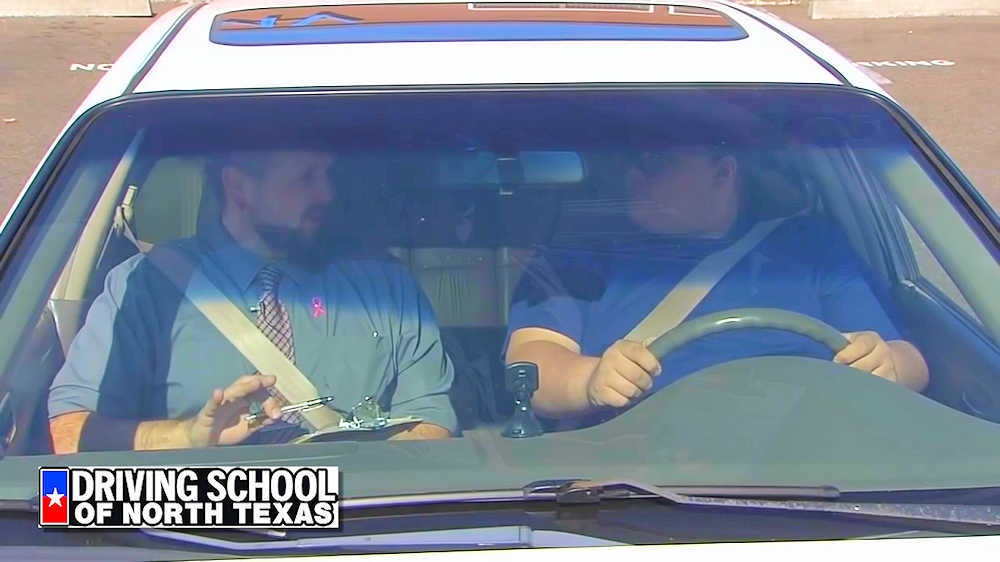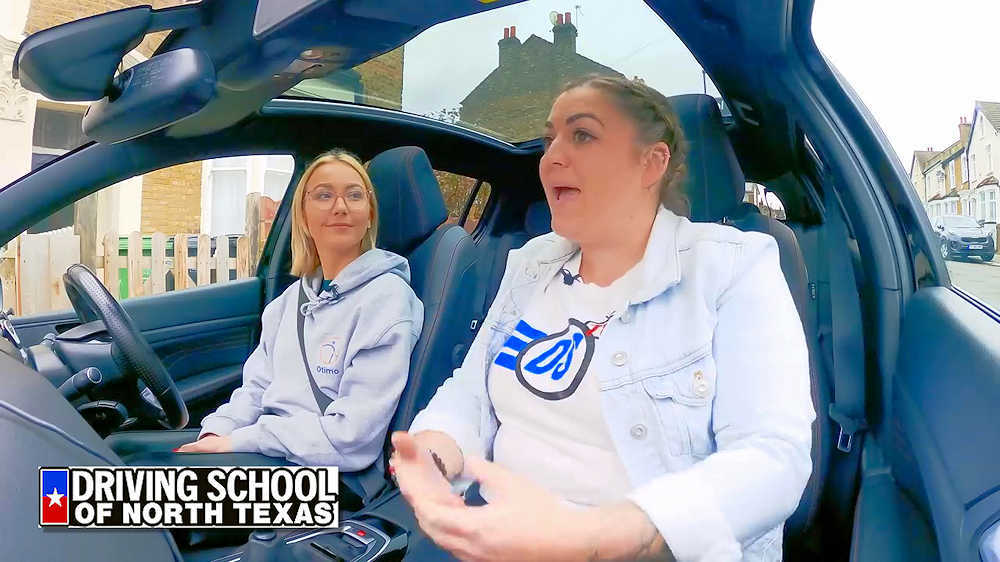Table of contents
- Key Takeaways
- Definition and Importance of Defensive Driving
- Current State of Driver’s Education Curriculum
- The Pros of Making Defensive Driving Mandatory
- The Cons of Making Defensive Driving Mandatory
- Case Studies: Countries Where Defensive Driving is Mandatory
- Public Opinion on Making Defensive Driving Mandatory
- Frequently Asked Questions
- How much would it cost to incorporate defensive driving into the existing curriculum?
- How long would it take for a novice driver to master defensive driving techniques?
- Are there any specific age groups that would benefit more from mandatory defensive driving than others?
- What are the potential legal implications of making defensive driving mandatory in the curriculum?
- How would making defensive driving mandatory affect insurance rates for young drivers?
- Conclusion
Imagine you’re behind the wheel, cruising on an open road. Suddenly, a deer leaps into your path. Would you know how to react? Or suppose you’re driving in heavy rain and your car starts to skid. Could you handle it? These are scenarios where defensive driving skills come into play – knowing what to do before a hazardous situation occurs, rather than just reacting when it does. In essence, defensive driving is all about anticipation, preparedness and correct responses.

Now let’s think about driver’s education curriculum as it stands today. You learn the rules of the road, how to operate a vehicle but when it comes to handling unexpected situations or predicting others’ actions on the road – that’s not given much focus in most curriculums. This brings us to an important question: should we be doing more? Should defensive driving be made a mandatory part of driver’s education curriculum? As we delve into this topic further, we’ll examine both sides of the argument – weighing up the pros and cons while also looking at case studies from countries where defensive driving is already compulsory.
Key Takeaways
- Current driver’s education curriculum lacks emphasis on defensive driving.
- Defensive driving skills can decrease the risk of accidents and improve driving skills.
- Defensive driving has the potential to improve road safety conditions globally.
- Potential drawbacks of mandating defensive driving include financial implications and time constraints.
Definition and Importance of Defensive Driving
Though you’re cruising down a sunny highway, it’s defensive driving that’ll keep you prepared for the sudden storm of an unexpected obstacle. Now, what exactly is this concept? Defensive driving is a set of skills that allow you to defend yourself against possible collisions caused by bad drivers, drunk drivers, and poor weather conditions. It goes beyond knowing the rules of the road and the basic mechanics of driving. Instead, it involves employing risk assessment techniques to understand potential dangers before they become immediate threats.
You see, defensive driving isn’t just about how well you handle your vehicle; it also involves being mindful of your vehicle’s health. The importance of regular vehicle maintenance in defensive driving can’t be overstated. A well-maintained car responds better in emergencies and is less likely to cause one itself. So checking your brakes’ effectiveness, making sure all lights work properly or keeping tire pressure at optimal levels – these are not just chores to tick off your list but vital components in ensuring a safe drive.
Taking such measures lead towards enhancing safety on the roads for everyone involved – you as a driver and others around too. But here’s something worth contemplating: Is acquiring knowledge about these techniques currently emphasized enough in our driver’s education programs? That question engages us into looking deeper into our existing curriculum and asking if we are doing enough to educate new drivers about this proactive approach towards safe driving habits.
Current State of Driver’s Education Curriculum

Let’s dive right into the heart of the issue – our existing driver’s education. Over time, there has been a considerable evolution in its curriculum. It’s no longer just about knowing how to turn on the ignition, shift gears, and understand road signs. Instead, it tackles a wide array of elements such as understanding traffic rules and regulations, handling different weather conditions while driving, managing vehicle maintenance and emergencies on road. However, defensive driving barely receives the attention it deserves in this mix.
Now let’s focus on an important aspect: teenage responsiveness towards this current curriculum. You see, teenagers are infamous for their rebellious nature and sometimes lack of judgment or foresight due to their still-developing brains. This is exactly why they need guided instruction more than anyone else when it comes to safety measures like defensive driving. Unfortunately though, without adequate emphasis in the curriculum itself, these vital skills could easily be overlooked by teens who might view them as unnecessary or ‘extra’ information rather than integral parts of being responsible drivers.
| BOOK YOUR DRIVING CLASS TODAY! |
| Driving School of North Texas |
This brings us naturally to our next point – should stricter measures be taken? Should defensive driving be made a mandatory part of the driver’s education curriculum? While we’ve seen that our current system does include numerous essential components meant for creating capable drivers out there on roads; yet there seems to exist a certain gap when it comes to defensive driving skills particularly among teenagers. Therefore looking forward into our discussion about making defensive driving mandatory would certainly add another layer of safety assurance not only for new teen drivers but also for everyone sharing the road with them.
The Pros of Making Defensive Driving Mandatory
You might be wondering, what’s the big deal about making additional safety measures an essential part of training for our young drivers? Well, think about this: defensive driving skills can significantly decrease the risk of accidents by teaching drivers to anticipate potential dangers and respond effectively. This proactive approach not only ensures safer roads but also brings several other benefits.
One of these perks is Insurance Benefits. Many insurance companies offer discounts or incentives to drivers who have completed a defensive driving course. Plus, it doesn’t just stop at monetary gains; there’s also a sense of reassurance knowing you’re better equipped to handle unforeseen circumstances on the road. Here’s a quick table giving you more insight into why making defensive driving mandatory is beneficial:
| Advantages | Description |
|---|---|
| Fewer Accidents | Defensive driving cultivates better awareness, thus reducing accident rates. |
| Insurance Discounts | Completion of such courses often leads to reduced insurance premiums. |
| Enhanced Driving Skills | Learners gain advanced techniques that surpass standard driver education. |
| Improved Risk Awareness | Drivers become adept at identifying and reacting promptly to potential hazards. |
| Safer Road Environment | A collective improvement in driving habits contributes to safer roads for all users. |
It’s evident that making defensive driving compulsory in the curriculum would foster enhanced skillsets among new drivers and promote a broader culture of road safety through improved Risk Awareness. However, while these benefits are significant, it’s vital not to overlook potential drawbacks that could arise from implementing such changes universally. Let’s shift gears now and explore some arguments against mandating defensive driving as part of every new driver’s education.
The Cons of Making Defensive Driving Mandatory

While there’s no denying the benefits, it’s also crucial to consider potential drawbacks that could stem from making driver safety courses obligatory for all new drivers. One of the main concerns is the financial implications this policy may bring about. Not everyone can easily shoulder additional costs associated with these driving courses. Defensive driving classes are not cheap; they involve hiring certified instructors, acquiring necessary equipment and resources, maintaining facilities, among other expenses which will eventually be passed down to the students. This could create an unfair situation where wealthier individuals can access better training than those who are financially constrained.
Aside from cost issues, time constraints also pose a significant challenge in implementing mandatory defensive driving education for all drivers. Most people lead busy lives juggling work, school or family responsibilities and finding extra hours to attend such detailed and comprehensive classes may not be feasible for everyone. Moreover, considering the varied skill levels of learners – some may require more hours than others to grasp key defensive driving concepts – rigid time requirements might prove to be ineffective or even counterproductive as rushed learning doesn’t often yield good results.
Despite these drawbacks, it doesn’t detract from the fact that defensive driving holds immense potential in improving road safety conditions globally. However, policymakers should take these considerations into account when drafting legislation regarding mandatory driver education programs. Striking a balance between enforcing essential skills without imposing excessive burdens on citizens is key here. Now let’s delve deeper into real-life applications by examining case studies: countries where defensive driving has been made mandatory in their curriculum.
Case Studies: Countries Where Defensive Driving is Mandatory
Examining various nations across the globe where compulsory driver safety courses are part of the licensing process is akin to looking through a prism, revealing varied colors and patterns of implementation. Some nations have successfully incorporated defensive driving into their national curriculum, while others struggle with its integration due to cultural or logistical differences. International regulations often influence these decisions, but it’s also crucial to consider each country’s unique driving culture.
For instance, in Australia mandatory defensive driving courses are integrated into their license attainment process. This approach has led to a significant reduction in road accidents among new drivers. In contrast, India’s densely populated cities pose unique challenges for implementing such training. Despite this, they have initiated government-run programs that offer defensive driving classes free of charge for commercial drivers. These examples illustrate how different countries adapt to international regulations and adjust them according to their own needs and circumstances.
| BOOK YOUR DRIVING CLASS TODAY! |
| Driving School of North Texas |
Contrarily, some European countries like Germany already have rigorous licensing processes in place without specifically mandating defensive driving courses. Their emphasis lies on practical experience under diverse conditions over an extended period before granting full licenses. Understanding these case studies offers useful insights into how different cultures prioritize driver education and safety measures according to local contexts and constraints. Now let us pivot our focus towards public opinion about making defensive driving mandatory; understanding popular sentiment can shed more light on this multifaceted debate.
Public Opinion on Making Defensive Driving Mandatory

Public sentiment on the topic of requiring every driver to partake in safety programs is indeed a mixed bag. There’s no denying that defensive driving courses have proven their worth, but the idea of making them mandatory has elicited a wide range of opinions. It seems like public resistance and opinion diversity are two significant obstacles that proponents of this idea need to overcome.
Let’s delve deeper into some common perspectives:
- Support for Safety: Many people believe that defensive driving should be mandatory as it helps inculcate safer driving habits and could potentially reduce road accidents.
- Concerns about Costs: Others worry about the financial implications – not everyone can afford to pay for these courses, and if they become obligatory, it might place an undue burden on certain demographics.
- Time Constraints: Some argue against it due to time constraints; adding another requirement could make obtaining or renewing a license more time-consuming.
- Questioning Effectiveness: A section of the population questions the overall effectiveness of these courses in improving driving skills or reducing mishaps.
The debate over making defensive driving mandatory is far from settled; however, there are potential solutions that aim to address concerns on both sides. For instance, governments could consider subsidizing costs for those who can’t afford them while ensuring course content truly enhances drivers’ skills and awareness levels. It’s also crucial to study the long-term impacts extensively before implementing such a policy universally. This way, real-world results can inform decision-making rather than relying purely on theoretical benefits or drawbacks alone.
Frequently Asked Questions
How much would it cost to incorporate defensive driving into the existing curriculum?
Determining the exact cost of incorporating defensive driving into your existing curriculum can be quite complex. The majority of the expense will likely come from defensive driving funding, which would cover resources such as training materials, instructor fees, and simulation equipment if desired. While there might be some free or low-cost online materials available for integration, high-quality comprehensive programs often come with a substantial price tag. Additionally, you’ll encounter curriculum integration challenges like working through scheduling issues to fit in added instruction without compromising other critical content areas. It may also require additional teacher training or hiring outside instructors specializing in defensive driving. So while introducing this new component might enhance student safety skills on the road, it’s crucial to carefully consider all potential costs and challenges involved in its implementation.
How long would it take for a novice driver to master defensive driving techniques?

Imagine you’re climbing Mount Everest, but instead of trekking gear, you’ve got a steering wheel, and instead of snow boots, gas and brake pedals. That’s what mastering defensive driving techniques can feel like for a novice driver – daunting yet thrilling! The journey towards defensive techniques improvement varies greatly from person to person. For some it could be as quick as a few weeks while others may require several months or even longer to really get the hang of it. But remember this – every twist and turn on this path will significantly boost your driving confidence. It’s not just about learning how to handle your car better; it’s also about understanding the road and its many unpredictable elements. You see, defensive driving is not only an action; it’s a mindset that needs careful nurturing until it becomes second nature. So buckle up for an exciting ride towards becoming a safer, more confident driver!
Are there any specific age groups that would benefit more from mandatory defensive driving than others?
You may think that defensive driving is exclusively for novice drivers, but it’s actually beneficial across all age groups. However, some age groups might benefit more from ‘Age Specific Modules’ in a mandatory defensive driving course. For instance, teenage drivers who are still developing their skills and judgment on the road could greatly benefit from learning these techniques early on. On the other end of the spectrum, senior citizens can enhance their adaptability to rapid changes in traffic conditions or unexpected scenarios through defensive driving lessons. So while everyone can gain something from it, these two groups specifically could potentially see even greater benefits due to their unique requirements and challenges behind the wheel.
What are the potential legal implications of making defensive driving mandatory in the curriculum?
Imagine you’re playing a game of chess. You’ve got the king cornered, but just as you move in for the checkmate, your opponent flips the board. That’s a bit like what could happen when introducing mandatory defensive driving into the curriculum. Legal resistance may spring up from various quarters, challenging it on grounds of constitutional rights. Critics might argue that such a requirement infringes upon individual liberties or that it adds an unnecessary burden to already overloaded educational institutions. They might claim this mandate goes beyond the scope of what schools are meant to do; focusing on academic skills rather than practical life skills like driving. Thus, while making defensive driving compulsory could have numerous benefits in terms of promoting road safety and reducing accidents, you must also prepare for potential legal battles along the way.
How would making defensive driving mandatory affect insurance rates for young drivers?
If defensive driving became a mandatory part of the curriculum, your insurance rates as a young driver could potentially decrease. Insurance companies conduct risk assessments to determine rates and they often view young drivers as high-risk due to their lack of experience on the road. However, if you’ve been taught defensive driving techniques, it shows that you’re proactive in accident prevention. It demonstrates that you’re equipped with skills designed to anticipate potential hazards and make safe decisions when faced with dangerous situations on the road. Therefore, this could lead insurers to see you as less risky, which might result in lower insurance premiums for you.
Conclusion

In conclusion, you’ve seen both sides of the coin. On one hand, incorporating defensive driving into the curriculum can be a game-changer; it could save lives, prevent accidents and promote safety on roads. On the other hand, there are possible downsides such as increased costs and time investment.
However, isn’t it worth putting in that extra effort if it means safer journeys for all? Think about it – Your decision today could shape safer roads tomorrow.
| BOOK YOUR DRIVING CLASS TODAY! |
| Driving School of North Texas |
It’s time to put this blog post in park, but your driving journey is far from over. At the Driving School Of North Texas, we are committed to making the roads safer by producing confident and responsible drivers. No matter your experience or comfort level, our seasoned instructors in McKinney, Frisco (East), Frisco (West), and Allen, TX are prepared to guide you every step of the way. Ready to get behind the wheel? Contact us at 214-504-9292 or book your next lesson at DrivingSchoolOfNorthTexas.com. Fasten your seatbelts and prepare for an incredible driving adventure!
Contact us at either of 4 convenient locations:
Driving School of North Texas
204 N. Greenville #300
In the CiCi’s Pizza Center
Allen, Texas 75002
214-383-9795
https://goo.gl/maps/fjZfRkMFqv2UPsjj9
Driving School of North Texas
6449 Coit Road #114
South of Centennial High
School Frisco, Texas 75035
469-633-7110
https://goo.gl/maps/6NwoSzp3AXJkbyacA
Driving School of North Texas
4433 Punjab Way #401
Frisco, Texas 75033
214-705-9959
https://goo.gl/maps/kEdTkLsVfwfa3ke39
Driving School of North Texas
4900 Eldorado, #132
McKinney, Texas 75070
214-504-9292
https://goo.gl/maps/Ls54fbeQi2JQMqrW6





